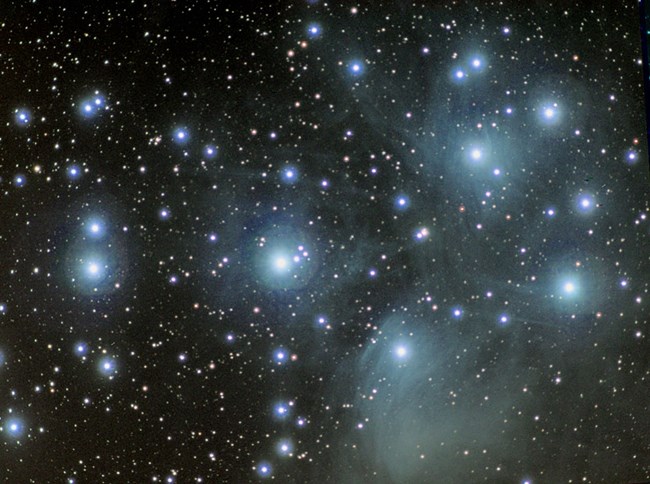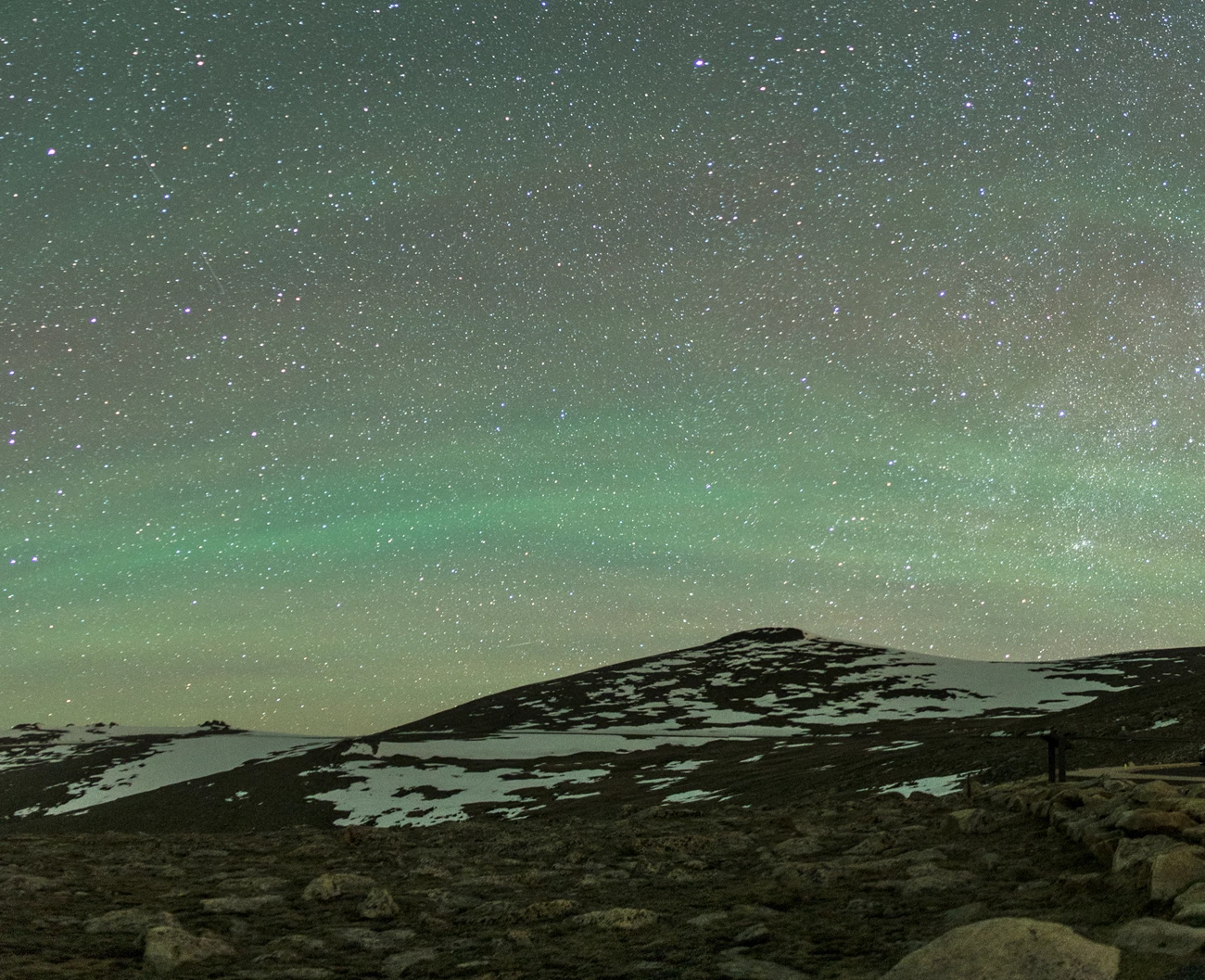
Natural light sources at night include the moon, stars, planets, the Milky Way, zodiacal light, airglow, and aurora if you are in high latitude regions. Naturally lit night skies are not completely dark. On the contrary, they areas filled with luminous light that changes every second.
Moon
The moon is the brightest natural source in the night sky. A full moon can provide 400 times more illumination on the ground compared to a moonless sky. When the moon is up, faint stars and many celestial objects will not be visible. However, the moon itself is a great target for binoculars and small telescopes and often provides outstanding opportunities for lay astronomers and park visitors seeking fun nighttime activities. Volcanic features and the craters of the moon are easy to see with these devices!
Stars and Planets
On average, there are about 4000 stars visible to the naked eye at night. And all of those are within our galaxy. Do you know that stars come in different colors? This is because they have different surface temperatures!
Planets are usually the first ones showing up in the twilight sky. If you ever wonder what’s that first bright star right after sunset, it is mostly likely a planet and not a star. Venus always appears close to the Sun whereas Mars, Jupiter, and Saturn can appear higher in the sky along the ecliptic plane (orbital plane of earth around the sun).

The Milky Way
The Milky Way is the galaxy that we are in. The Milky Way is a barred spiral galaxy containing more than 100 billion stars, dust lanes, dark matter, and a supermassive blackhole. When observed from earth, it appears as an irregular band of light encircling the celestial sphere. The light is comprised of vast numbers of unresolved stars and dust. Thus, the Milky Way light is also called galactic light or integrated starlight. Its position and orientation in the sky varies with the seasons and the nightly motion of the sky. The Milky Way is best seen under a clear dark night sky.
NPS/ Jeremy White
Zodical Light
The Zodiacal light appears as a noticeable cone of light near the sun, most visible immediately after evening twilight in the west and before morning twilight in the east. It is caused by sunlight scattered by dust particles in our solar system. Zodiacal light is only apparent at a relatively dark place and is most obvious in spring and fall.Airglow
Airglow is the light emitted mostly from excited oxygen atoms in the Earth’s upper atmosphere. The air gets energized by the Sun and cosmic rays during the day. When the air discharges, extra energies are emitted in the form of light. Airglow is somewhat unpredictable, and it is the largest source of uncertainty in modeling natural night sky brightness. Airglow often appears as a vague and smooth light in the sky that is brighter toward the horizon as compared to the zenith. However, it can sometimes have a banded or wispy character and change in the timescale of minutes. Although the most prominent airglow typically seen by people on the ground is the green light (557.7 nm) from oxygen, airglow is often colorless to our eyes under the nighttime vision.
NPS/Li-Wei

NPS/ Jeremy White

NPS/ Kent Miller
Aurora
Auroras are the light emitted from the energized constituents in the upper atmosphere. Energetic solar wind disturbs the trajectories of charged particles in the earth’s magnetic field. As these charged particles precipitate into the upper atmosphere, they ionize and excite the atmospheric constituents. Aurora comes in a variety of color and complexity. Its form can vary every second or be a steady glow. Aurora is a natural light show best visible in high-latitude regions like Alaska or Iceland. On rare occasions, aurora can be seen in the northern parts of the contiguous U.S.Last updated: June 17, 2024
